Rustic homemade lemon drizzle cake
I still remember the first time my oldest daughter tried her first piece of rustic homemade lemon drizzle cake. She was only one year old at the time. We had joined a new church following a recent move and had started to attend their Sunday service. It was one of those beautiful, (in Australian terms) old churches built from sandstone. Set between huge gum trees and beds of flowers, entering immediately relaxed your mind and detached you from all the hustle and bustle of the city.
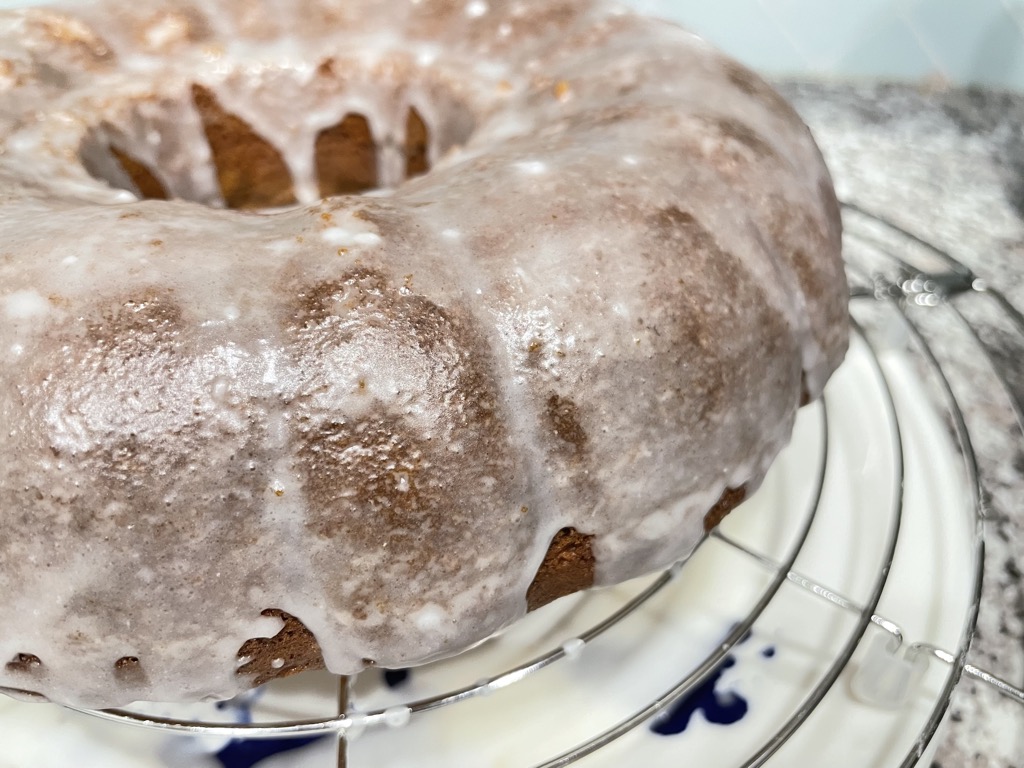
After service, most people hung around the church to socialise. They had a very active, older group of attendees who loved to bake. So every Sunday after service, trays of home baked cakes and cookies would await the church goers. Cups of tea and coffee were handed around and everyone just stuck around to socialise and get to know each other. It was magical! Such a beautiful community that immediately made you feel welcome. In such a big city, community is everything!
So there we were, one sunny Sunday morning, making our way over to the cake table. I can’t remember exactly what was on display that day, but what I do remember is my daughter reaching for a slice of thickly glazed lemon drizzle cake. She had her eyes on the prize and there was no diverting to a piece of fruit. So I let her have it. It was Sunday after all.
There was still a chance she wouldn’t like it. She hadn’t had anything with Lemons before, and who knew how much juice these elderly women used for baking. So she opened her tiny mouth, took a bite with the few teeth she had and… her eyes lit up, becoming wide as saucers. She LOVED it! Nom, nom, nom she exhaled, shoving that slice of cake into her as fast as she could eat.
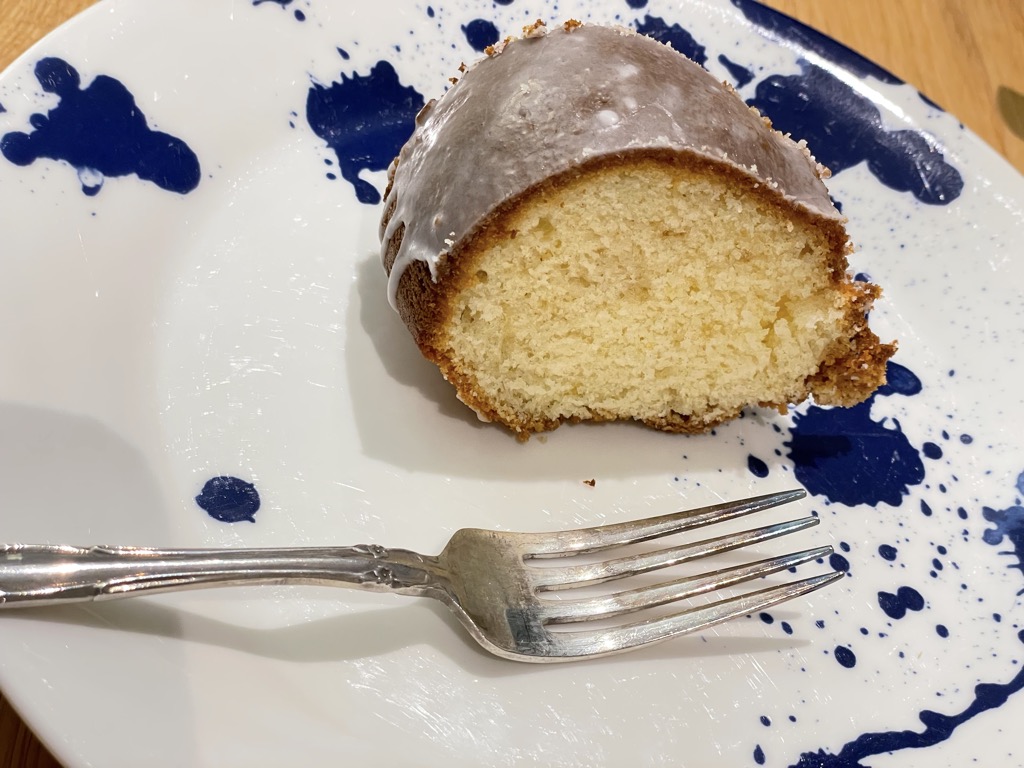
And with that, rustic homemade lemon drizzle cake had officially been introduced to our on-rotation meals. We go through phases where we bake a new cake every few weeks, and then forget about it again for a few months. Only to come back to it and embrace it with the appetite for something you’ve been craving for years.
Give it a try and see for yourself how delicious it is.
Tools you will need
Large mixing bowl
Stand mixer with whisk attachment
Kitchen scales
Lemon zester
Small whisk
Lemon press
Small bowl to mix lemon icing
Silicone brush
Small sauce pan or pot to melt butter
Bundt cake tin
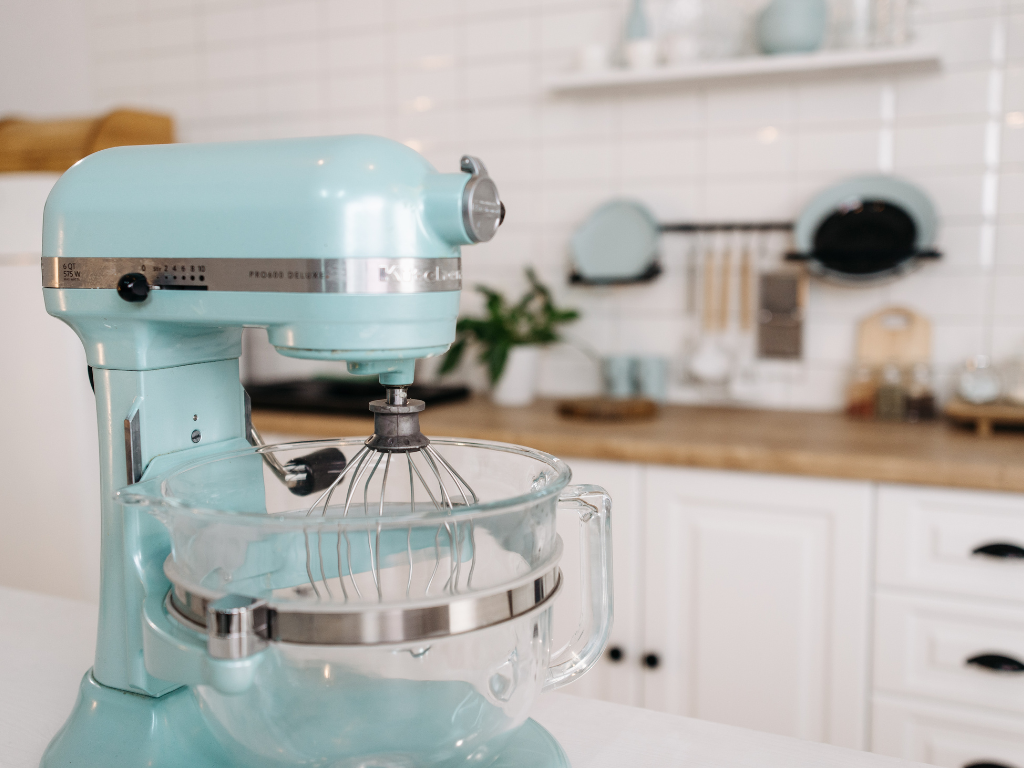
Ingredients
- All purpose flour
- Caster sugar
- Butter
- Eggs
- Lemons
- Powdered sugar
- Salt
- Baking Powder
- Plain yoghurt
Other cake recipes to try
If you enjoyed my Lemon Drizzle cake, why not try one of these sweet treats next:
- Earl Grey Honey Cake
- Sourdough Zucchini loaf
- Sourdough Carrot Cake
- Rustic Rhubarb Granola Bowl
- Warming Bratapfel Porridge
- Sourdough Oatmeal Choc Chip Cookies
- Almond Flour Shortcut Biscuits
- Mixed Berry Smoothie Bowl
How to bake a rustic homemade lemon drizzle cake from scratch
The first step to making any food is always the preparation of all ingredients and tools. Lay out your kitchen scales, bowls and cake tin, as well as all ingredients. Bonus points for pre-measuring in small bowls.
Next, start your oven to pre-heat. We’re aiming for 180 degrees Celsius fan forced or 200 degrees Celsius top and bottom heat.
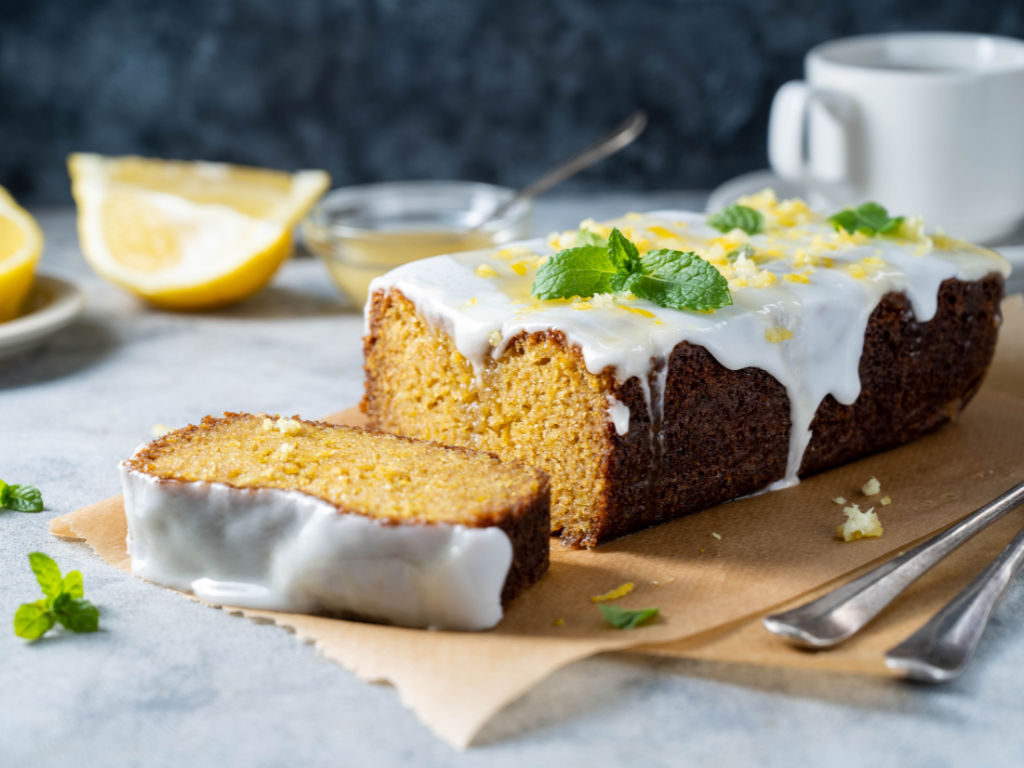
Place your butter in a small saucepan or pot and melt it on the stove. If you have a microwave, feel free to use that instead. Your butter doesn’t need to be all liquid, it just needs to be soft enough to easily incorporate in your dough without forming clumps.
As your butter is melting, take a piece of parchment paper or silicone brush and dip it into the soft butter. Take your bundt cake tin and rub the butter all around the inside. I like to take a little of my melted butter for this step, since it’s already the ideal consistency and prevents me from having to soften butter twice.
Take your mixing bowl and scales and combine flour, salt and baking powder. Give it a quick mix with your hands or a spoon.
Attach your bowl to your stand mixer. Add your sugar and lemon zest and combine your ingredients on slow speed. Next, add the melted butter to your dry ingredients and mix until well combined. You might need to stop the mixer to scrape the edges. Continue until all ingredients have been well combined.
Next, add your yoghurt and eggs. On medium speed, combine the dough until smooth and free of clumps. Scrape the edges as required.
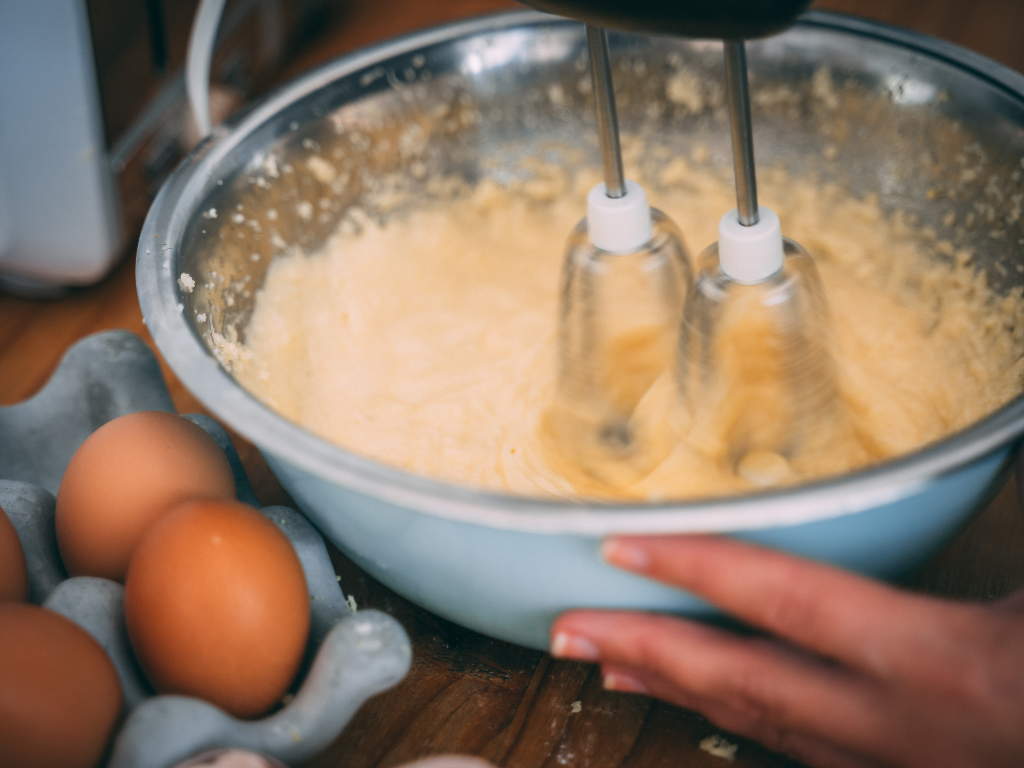
Time to bake! Transfer the dough to your bundt cake tin and place it in the preheated oven. Bake for 45 minutes or until golden. If unsure, test the cake using a wooden stick. No dough should stick to it once ready.
Turn off your oven and place your cake onto a cooling rack on your kitchen counter. Allow the cake to cool in the tin for at least 10 minutes before flipping it over.
Once the cake is cool to touch, start to mix up your lemon icing. Measure 150g of powdered sugar and squeeze the juice of 1 lemon. Add one teaspoon of juice to the powdered sugar and combine. Continue adding and combining until a thick paste forms. You may not need the full amount of lemon juice for this.
Using a silicone brush, brush the icing all over your cake. If your icing is thick enough you might be able to scoop or pour it over the top without running off too fast, but I prefer to be in full control and slowly layer the icing with a brush.
Serve with your favourite coffee or tea and enjoy!
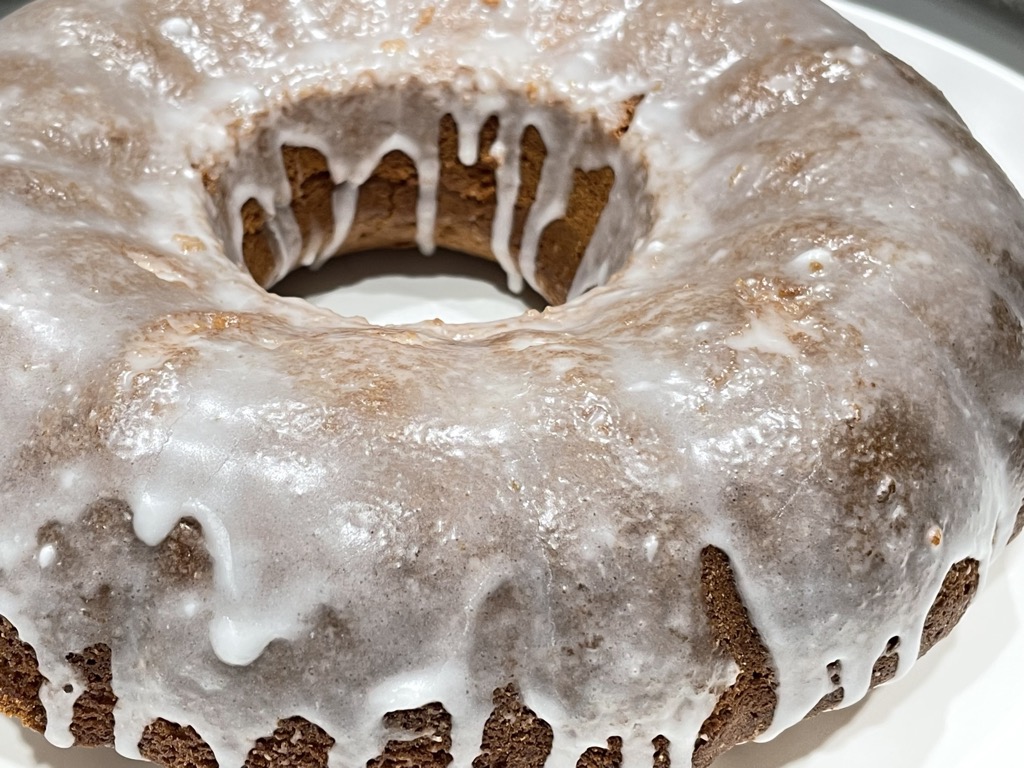
Useful tips and tricks to make rustic lemon drizzle cake
- If you are using melted butter in this recipe, make sure it has cooled a little before adding it to your dough. A good guide is to be able to touch the butter without it burning you.
- Only add your eggs once your melted butter has been incorporated into the dough. Adding both at the same time can potentially cause your eggs to cook if your butter is too hot. If you want to go the extra step, you could mix your eggs with the yoghurt to make them super cold before adding the mixture to your dough.
- When mixing your lemon glaze, add one teaspoon of lemon juice at a time. You will be surprised to see how much powdered sugar you need to turn even just half a lemon’s juice into glaze. Starting with only a little bit of juice at a time will prevent you making far too much icing.
- Bundt cake tins can sometimes cling to their cake a little too much. Allow your cake yo cool in the tin for around 10 minutes before gently loosening the edges with a silicone spatula or other soft and flexible item.
- When you are ready to flip your bundt cake tin, place a cooling rack over the opening of your cake tin while the opening is still facing up. Make sure your cooling rack covers the entire cake tin opening. Holding both sides firmly down, swiftly flip the tin upside down for the cake to land on your cooling rack. If the cake is stuck, flip it back over and try to loosen the edges some more with a silicone spatula.
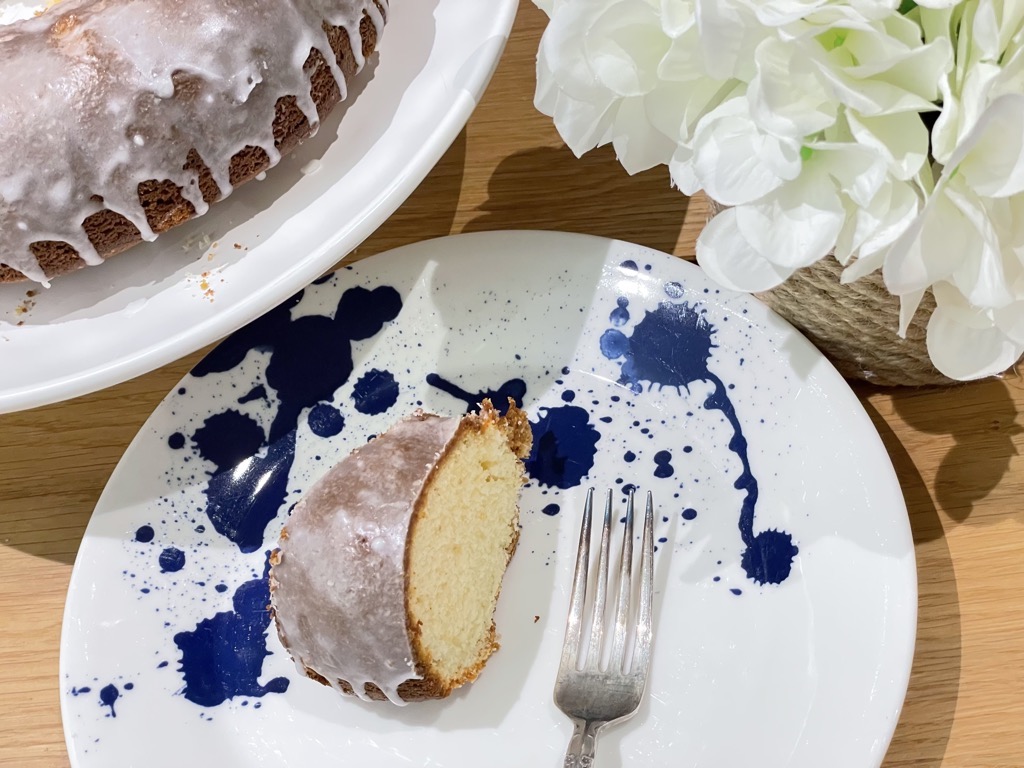
Frequently asked questions
Why is my lemon drizzle cake soggy?
Cake often turns soggy if too much liquid was added or if it has been baked at a temperature too low for the recipe. Make sure to follow the instructions and pre-heat the oven before baking your cake.
How do I make my cake more moist?
This rustic homemade lemon drizzle cake recipe turns out so nice and moist due to the yoghurt used in the recipe. Often, recipes only call for eggs to lift the cake. Over mixing of eggs can however easily happen, meaning your cake will become a little dense. Exactly the opposite of what we were trying to achieve. Other simple swaps of ingredients to make a cake more moist are:
- Using buttermilk instead of milk
- Using mild vegetable oil instead of butter
- Using a lighter flour for baking, like all purpose flour.
Can you use normal sugar instead of caster sugar?
Depending on the country you live in, caster sugar might already be your “normal” sugar. For baking and any type of recipes asking for a smooth texture, try to use the sugar with the finest available granules. The focus here is on granules, you don’t want to be using powdered sugar in your recipes. If in doubt, rub a little sugar over your hands and see if it still feels a little scratchy. That’s the sugar you will want to use.
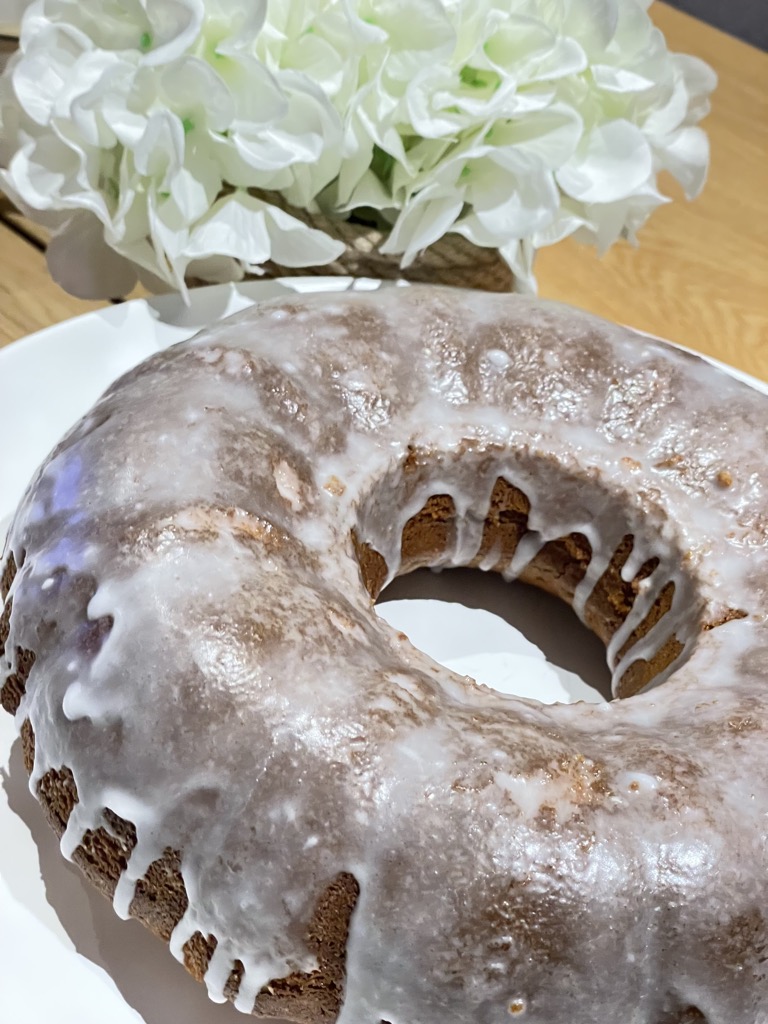
What happens if you put too much lemon juice in a cake?
Putting too much lemon juice in a cake will mostly impact the cake’s flavour. If your excess in lemon juice is not balanced by enough sweetener like sugar, your cake will become overly sour and unpleasant. In rare occasions, an overly excessive use of lemon juice could also cause your cake to become soggy.
What temperature to bake a cake?
Cakes are usually baked at 180 degrees Celsius or 350 degrees Fahrenheit. Given their long and slow bake, it is recommended to use conventional (top and bottom) heat to distribute the heat evenly in your oven.
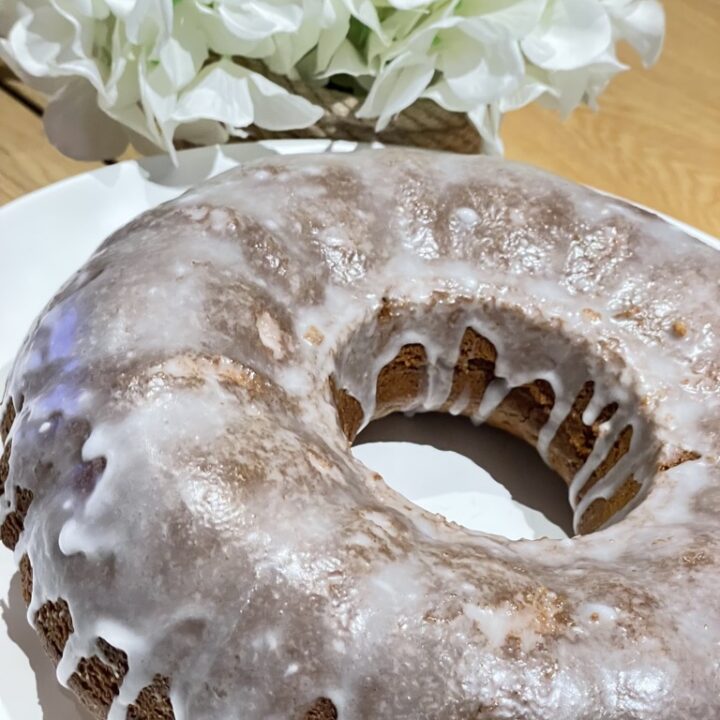
Rustic homemade lemon drizzle cake
Rustic homemade lemon drizzle cake has become a staple in our household. Once you’ve tried it, you’ll understand why.
Ingredients
- For the Dough
- 200g all purpose flour
- 2 tsp baking powder
- 1/2 tsp salt
- Zest of 2 lemons
- 200g caster sugar
- 2 eggs
- 100g soft butter
- 180g plain yoghurt
- For the Glaze
- Juice of 1/2 - 1 lemon
- 150g powdered sugar
Instructions
- The first step to making any food is always the preparation of all ingredients and tools. Lay out your kitchen scales, bowls and cake tin, as well as all ingredients. Bonus points for pre-measuring in small bowls.
- Next, start your oven to pre-heat. We’re aiming for 180 degrees Celsius fan forced or 200 degrees Celsius top and bottom heat.
- Place your butter in a small saucepan or pot and melt it on the stove. If you have a microwave, feel free to use that instead. Your butter doesn’t need to be all liquid, it just needs to be soft enough to easily incorporate in your dough without forming clumps.
- As your butter is melting, take a piece of parchment paper or silicone brush and dip it into the soft butter. Take your bundt cake tin and rub the butter all around the inside. I like to take a little of my melted butter for this step, since it’s already the ideal consistency and prevents me from having to soften butter twice.
- Take your mixing bowl and scales and combine flour, salt and baking powder. Give it a quick mix with your hands or a spoon.
- Attach your bowl to your stand mixer. Add your sugar and lemon zest and combine your ingredients on slow speed. Next, add the melted butter to your dry ingredients and mix until well combined. You might need to stop the mixer to scrape the edges. Continue until all ingredients have been well combined.
- Next, add your yoghurt and eggs. On medium speed, combine the dough until smooth and free of clumps. Scrape the edges as required.
- Time to bake! Transfer the dough to your bundt cake tin and place it in the preheated oven. Bake for 45 minutes or until golden. If unsure, test the cake using a wooden stick. No dough should stick to it once ready.
- Turn off your oven and place your cake onto a cooling rack on your kitchen counter. Allow the cake to cool in the tin for at least 10 minutes before flipping it over.
- Once the cake is cool to touch, start to mix up your lemon icing. Measure 150g of powdered sugar and squeeze the juice of 1 lemon. Add one teaspoon of juice to the powdered sugar and combine. Continue adding and combining until a thick paste forms. You may not need the full amount of lemon juice for this.
- Using a silicone brush, brush the icing all over your cake. If your icing is thick enough you might be able to scoop or pour it over the top without running off too fast, but I prefer to be in full control and slowly layer the icing with a brush.
- Serve with your favourite coffee or tea and enjoy!
Notes
- If you are using melted butter in this recipe, make sure it has cooled a little before adding it to your dough. A good guide is to be able to touch the butter without it burning you.
- Only add your eggs once your melted butter has been incorporated into the dough. Adding both at the same time can potentially cause your eggs to cook if your butter is too hot. If you want to go the extra step, you could mix your eggs with the yoghurt to make them super cold before adding the mixture to your dough.
- When mixing your lemon glaze, add one teaspoon of lemon juice at a time. You will be surprised to see how much powdered sugar you need to turn even just half a lemon’s juice into glaze. Starting with only a little bit of juice at a time will prevent you making far too much icing.
- Bundt cake tins can sometimes cling to their cake a little too much. Allow your cake yo cool in the tin for around 10 minutes before gently loosening the edges with a silicone spatula or other soft and flexible item.
- When you are ready to flip your bundt cake tin, place a cooling rack over the opening of your cake tin while the opening is still facing up. Make sure your cooling rack covers the entire cake tin opening. Holding both sides firmly down, swiftly flip the tin upside down for the cake to land on your cooling rack. If the cake is stuck, flip it back over and try to loosen the edges some more with a silicone spatula.
